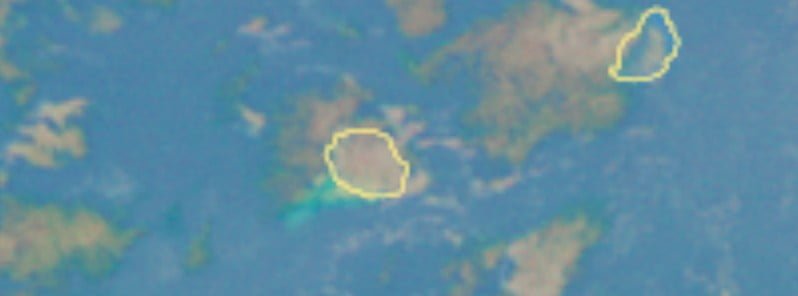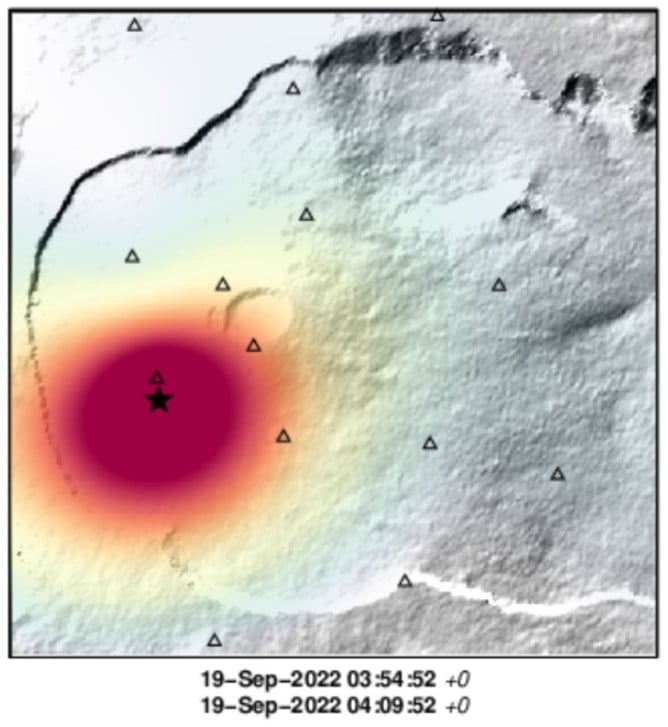Eruption at Piton de la Fournaise volcano, Reunion

A new eruption started at Piton de la Fournaise volcano on September 19, 2022, following a seismic crisis that started at 02:23 local time (06:23 UTC). The alert level was raised to 2-1. Trails in the upper part of the summit were closed to the public.
The volcanic tremor synonymous with the arrival of magma near the surface has been recorded since approximately 03:48 UTC.
According to the OVPF recordings, the source of this tremor is located on the south-southwest flank, in the sector of the Rivals crater (located around 2 200 m / 7 220 feet above sea level).

At the time, no visual confirmation of the start of the eruption could be made on the webcams because of the bad meteorological conditions and OVPF said it cannot confirm the arrival of the lava on the surface.
Nevertheless, the presence of a tremor shows the emission of hot and incandescent gases on the surface and the possibility of short-term lava emission.
In addition, satellite imagery acquired by EUMETSAT/METEOSAT-9 shows the presence of ash in the atmosphere above the island, drifting E.
The last eruption of this volcano started on December 22, 2021, and lasted until January 17, 2022 (VEI 0).
Update:
The weather cleared up and we have images of the new eruption:
Geological summary
The massive Piton de la Fournaise basaltic shield volcano on the French island of Réunion in the western Indian Ocean is one of the world’s most active volcanoes.
Much of its more than 530 000-year history overlapped with eruptions of the deeply dissected Piton des Neiges shield volcano to the NW.
Three calderas formed at about 250 000, 65 000, and less than 5 000 years ago by progressive eastward slumping of the volcano. Numerous pyroclastic cones dot the floor of the calderas and their outer flanks.
Most historical eruptions have originated from the summit and flanks of Dolomieu, a 400-m-high (1 312 feet) lava shield that has grown within the youngest caldera, which is 8 km (26 247 feet) wide and breached to below sea level on the eastern side.
More than 150 eruptions, most of which have produced fluid basaltic lava flows, have occurred since the 17th century.
Only six eruptions, in 1708, 1774, 1776, 1800, 1977, and 1986, have originated from fissures on the outer flanks of the caldera.
The Piton de la Fournaise Volcano Observatory, one of several operated by the Institut de Physique du Globe de Paris (IPGP), monitors this very active volcano.2
References:
1 Communiqué du 19/09/2022 – 8h05 heure locale – OVPF
2 Piton de la Fournaise – geological summary – GVP
Featured image credit: OVPF-IFGP

Commenting rules and guidelines
We value the thoughts and opinions of our readers and welcome healthy discussions on our website. In order to maintain a respectful and positive community, we ask that all commenters follow these rules.